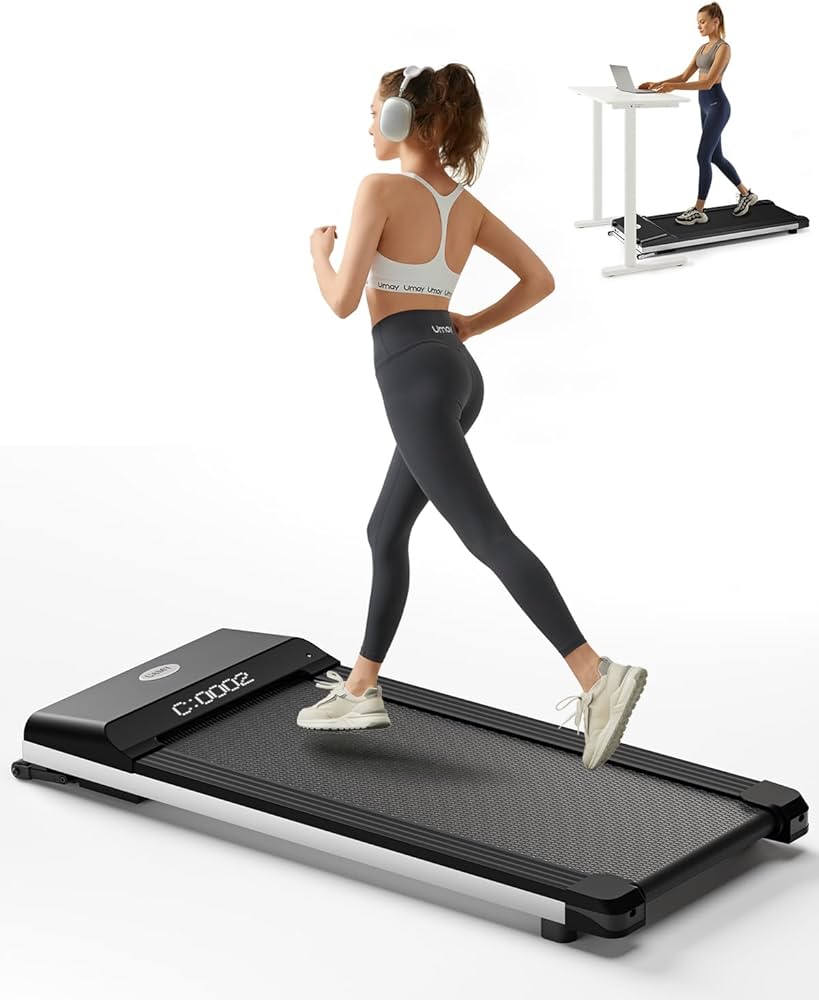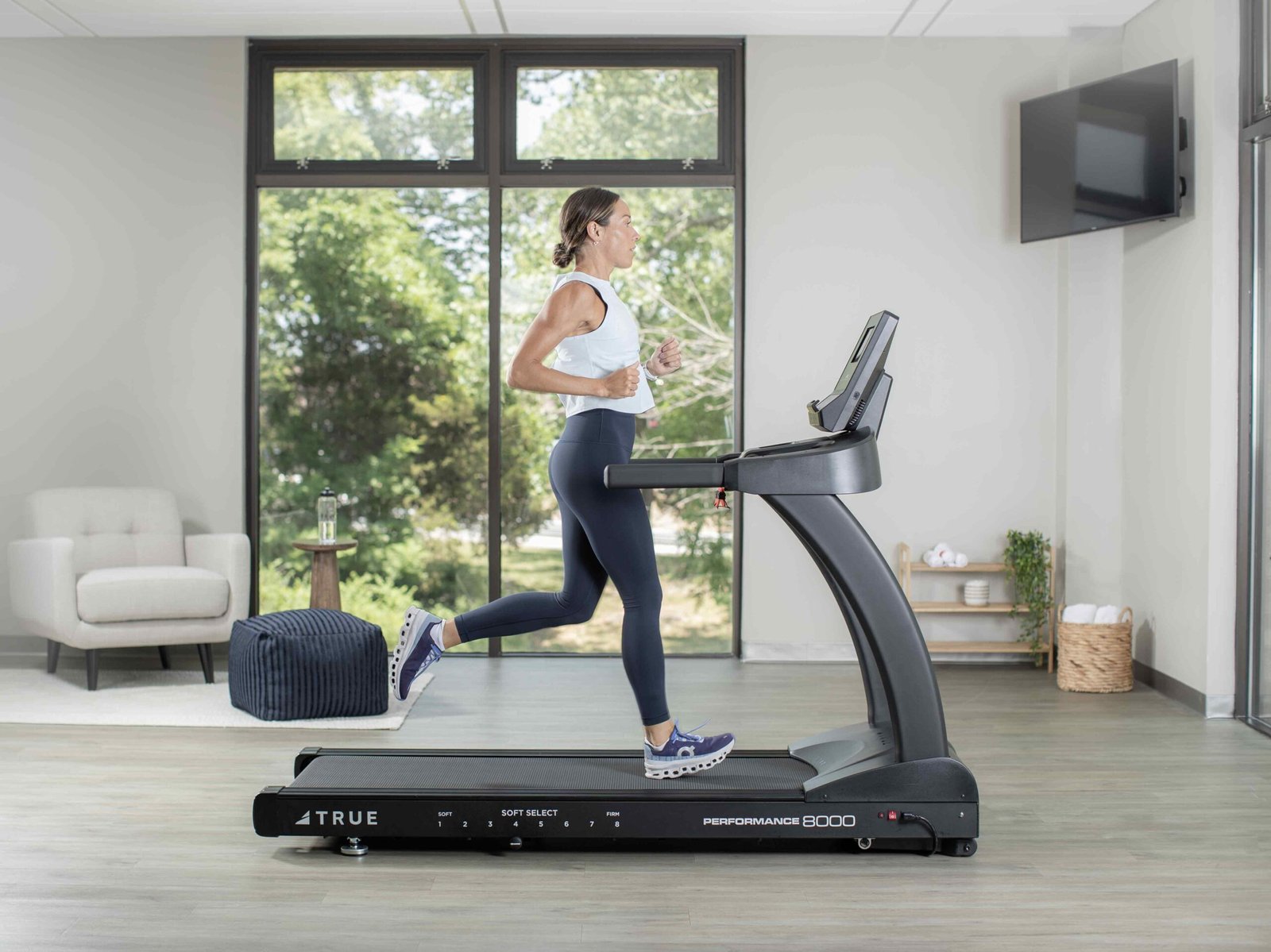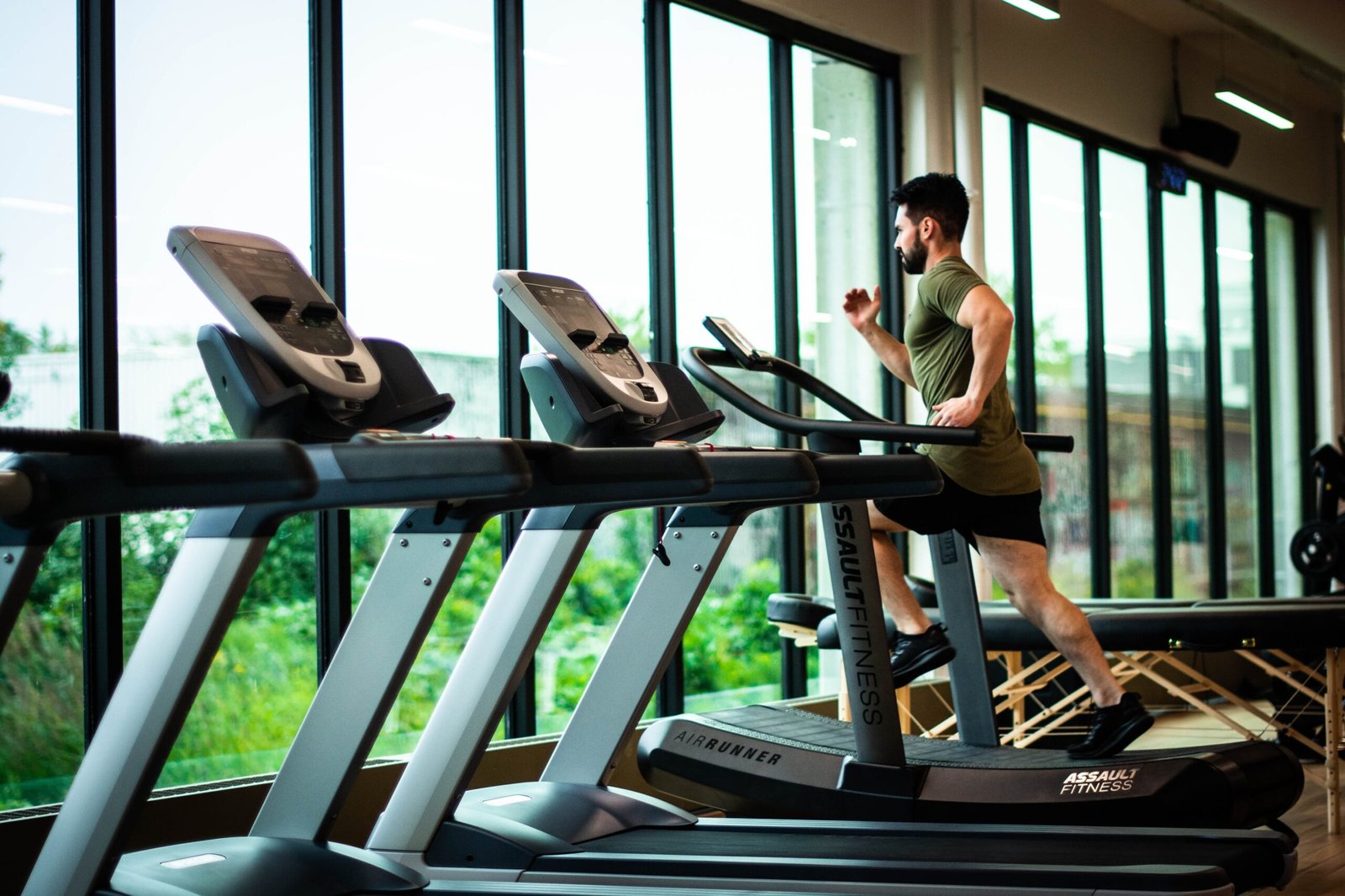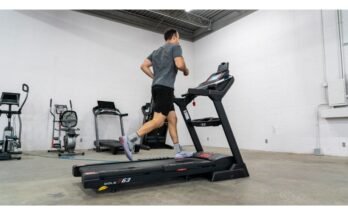To run quietly on a treadmill, use midfoot strikes and maintain a light, consistent pace. Wear cushioned trainers to absorb sound and impact.
Running on a treadmill can often be a noisy affair, but with the right technique and equipment, you can reduce the volume significantly. Opting for quiet cardio sessions can benefit both apartment dwellers and early risers, preventing disturbances to neighbors and family members.
Mastering a noiseless tread can enhance your workout experience, allowing you to focus on your aerobic activity without additional stress. Incorporating a soft stepping style not only diminishes sound but also minimizes the pressure on your joints, leading to a safer and more enjoyable exercise routine. By embracing these simple tips, you can achieve an effective and stealth-like treadmill run.
Why Silence Is Golden On The Treadmill
Picture this: stepping onto your treadmill, ready for a workout but without the noisy clatter of footsteps. Achieving quiet while running on a treadmill enhances the experience and benefits your routine greatly. Let’s delve into why keeping noise at bay is not just courteous but also crucial for an effective workout.
The Benefits Of Noise Reduction
- Decreased Distraction: Noise serves as a distraction, fragmenting your attention, making workouts less effective.
- Better Concentration: Quietness fosters a zone-like state, helping you concentrate fully on your movements and breathing.
- Enhanced Audio Experience: Enjoy clear music or podcasts, allowing motivational beats or words to push you further.
- Family Friendly: Keep your household peaceful, avoiding disturbances to sleeping family members or roommates.
- Longevity of Equipment: Quiet running often means you’re operating the treadmill more smoothly, which can prolong its lifespan.
Impact On Focus And Form
By quieting down your treadmill runs, you directly impact your focus and form.
| Focus Area | Benefits of Silence |
|---|---|
| Concentration | Silence reduces distractions, making it easier to stay present and attentive to your workout’s needs. |
| Running Form | Less noise points to softer landings, which encourage better form, reducing the risk of injury. |
| Mental Clarity | A quiet environment promotes a meditative state, where stress melts away, and your mind clears. |
Remember, proper form isn’t just about safety; it also ensures you’re getting the most out of each stride. So next time you hop on the treadmill, aim for silent steps — it’s a game-changer for both body and mind.
The Science Of Sound: Treadmill Mechanics
Running indoors on a treadmill is a great way to stay fit. But no one wants a noisy machine disrupting their workout—or their household. To run quietly, understanding how treadmills create sound helps. From the motor’s hum to the belt’s thump, every treadmill has its symphony. Let’s break down the noise, piece by piece, to help you keep your indoor runs as silent as possible.
Understanding Treadmill Noise
Why do treadmills make noise? A treadmill is like a small car. It has a motor, a belt, and moving parts that work together. When you run, your feet hit the belt. This makes a sound. The belt moves over rollers. This also makes a sound. The motor keeps everything moving. It too can be loud. Some noise is normal, but too much can be a bother.
Factors that affect noise include:
- Type of treadmill: Motorized versus manual
- Quality of parts: Better parts often mean less noise
- Your running style: Heavy steps make more noise
- Maintenance: Well-kept treadmills are quieter
Essential Components And Their Roles
Let’s look at the parts of a treadmill:
| Component | Function | Noise Factor |
|---|---|---|
| Motor | Drives the belt | May hum or whirr |
| Belt | You run on this | Can slap or squeak |
| Rollers | Help belt to move | Can rumble or creak |
| Deck | Supports the belt | Impact noise when stepped on |
| Frame | Holds it all up | Can vibrate or rattle |
Every component plays a role. A strong motor might be louder, but it lasts longer. A thick belt might make less noise, but you might need more power to move it. Keeping these parts in good condition helps. Regular maintenance can keep noise down.
Proper Running Technique For Less Noise
Mastering the Proper Running Technique for Less Noise on a treadmill not only enhances your workout experience but also reduces impact on your body. A quieter run protects the machine and increases its lifespan. Learn the essentials of light-footed strides and a silent workout below.
Mastering Foot Placement
To run quietly, focus on your foot placement. Aim for a mid-foot strike, where the ball of your foot touches down first, then let the heel follow. This technique softens the impact and minimizes noise. Practice by:
- Walking slowly to feel the mid-foot strike.
- Increase pace, maintaining the same footing.
- Consciously avoid heel-pound.
The Role Of Posture In Silent Running
A good posture is key to a silent tread. Stand tall, lift your chest, and engage your core. This alignment lets your body absorb shock better, leading to a quieter run. Keep these tips in mind:
- Keep shoulders relaxed, avoid shrugging.
- Eyes forward, chin parallel to the floor.
- Arms relaxed at a 90-degree angle.
- Imagine string pulling you from the top of your head.
Credit: www.ebay.com
Shoe Selection: A Key Factor In Noise Control
Selecting the right shoes is vital when aiming to run quietly on a treadmill. Loud footsteps can be a distraction. They can bother others around you. The type of shoes you wear significantly impacts the amount of sound produced. Let’s explore how quiet running shoes can help you maintain the peace.
Features Of Quiet Running Shoes
Quiet running shoes share special features. These features reduce noise and enhance your running experience. Let’s look at what makes a running shoe quieter:
- Soft Soles: Soles made of softer materials absorb impact better.
- Flexible Uppers: Shoes with flexible upper materials minimize noise as they bend easily with your foot’s motion.
- Tight Fit: A snug fit prevents excess movement inside the shoe, reducing squishy sounds.
- Minimalistic Tread Pattern: Simple tread patterns are quieter. They create less friction and noise on the treadmill belt.
How Cushioning Affects Sound
Shoe cushioning plays a crucial role in sound dampening. Well-cushioned shoes absorb impacts. They let you land softly with each step. This cushioning leads to a quieter run. Let’s consider the aspects of cushioning:
| Cushioning Level | Sound Level |
|---|---|
| High Cushioning | Lower sound |
| Moderate Cushioning | Medium sound |
| Minimal Cushioning | Louder sound |
In summary, selecting shoes with optimal cushioning and noise-reducing features is essential. It ensures a silent and enjoyable treadmill run.
Treadmill Maintenance To Minimize Noise
Keeping a treadmill quiet starts with proper maintenance. Regular care ensures silent steps as you run. Let’s dive into the details for a peaceful workout.
Regular Cleaning And Lubrication
Dirt and dust can cause noise. Clean your treadmill to prevent this issue. Below is a simple guide:
- Unplug the treadmill before cleaning.
- Use a soft cloth to wipe down the belt and deck.
- Vacuum around the treadmill to remove dust.
- Lubricate the belt regularly with silicone-based lubricant.
Lubrication reduces friction, which lessens wear and noise. Follow these steps:
- Loosen the belt and lift it slightly.
- Apply lubricant underneath the belt.
- Run the treadmill at a slow pace for five minutes to spread the lubricant.
When To Service For Silent Operation
Servicing your treadmill is key for silent runs. Here’s a quick checklist:
| Check Point | Action |
|---|---|
| Every three months | Check belt alignment and tension |
| Once a year | Professional service for full assessment |
Tightening loose parts can prevent unwanted noise. Replace parts like the belt or deck if they show excessive wear. Listen for odd sounds during use. This indicates it’s time for a check-up.
Customizing Your Environment For Quieter Workouts
Creating a serene workout space is crucial, especially if you’re running on a treadmill in a living area or shared room. You want to keep the noise to a minimum to avoid disturbing others. In this section, we’ll dive into how to achieve a quiet workout environment, from strategic treadmill placement to sound-dampening techniques. Let’s get started on customizing your space for those peaceful, focused workout sessions.
Strategic Placement Of The Treadmill
Positioning your treadmill wisely can significantly reduce noise levels. Avoid placing it against walls shared with neighboring rooms. Instead, find a central location where vibrations won’t easily travel through walls.
- Choose a room with solid flooring – Carpet absorbs sound better than hard surfaces.
- Ensure ample space around the treadmill – This minimizes noise reflection from surrounding surfaces.
Adding Sound-absorbing Materials
Sound-absorbing materials can dampen the noise generated from your treadmill. They absorb vibrations and echoes.
| Material | Placement | Impact |
|---|---|---|
| High-density Rubber Mats | Under Treadmill | Reduce vibration and sound |
| Acoustic Panels | On Adjacent Walls | Minimize noise reflection |
| Soft Furnishings | Around the Room | Soften ambient noise |
Pair these materials with sneakers featuring cushioned soles for an even quieter run.
Advanced Techniques And Accessories
Treadmill workouts can be noisy, but not anymore. Advanced techniques and accessories help you run quietly. Ready to transform your loud treadmill jogs into peaceful exercise sessions? Let’s discuss how you can achieve this with some clever tricks and helpful gadgets.
Incorporating Shock Absorbers
Shock absorbers play a huge role in reducing treadmill noise. They absorb vibrations and minimize impact noise. Here’s how to use them:
- Install rubber mats beneath your treadmill. It reduces the sound of each step.
- Look for treadmills with built-in cushioning. It softens your strides and cuts down on noise.
- Upgrade to a model with advanced shock absorbers. It makes your run as quiet as a whisper.
These techniques ensure your focus stays on your workout, not the noise.
Using Noise-cancelling Headphones
For a truly isolated sound experience, noise-cancelling headphones are the way to go. Here’s why they’re essential:
- Drown out treadmill noise and listen to music or podcasts.
- Headphones with active noise cancellation are perfect. They block even the hum of the treadmill motor.
- Choose a pair that’s comfortable for long periods. You won’t even feel they’re there as you run.
With these headphones, you create your own soundtrack to success without outside interference.
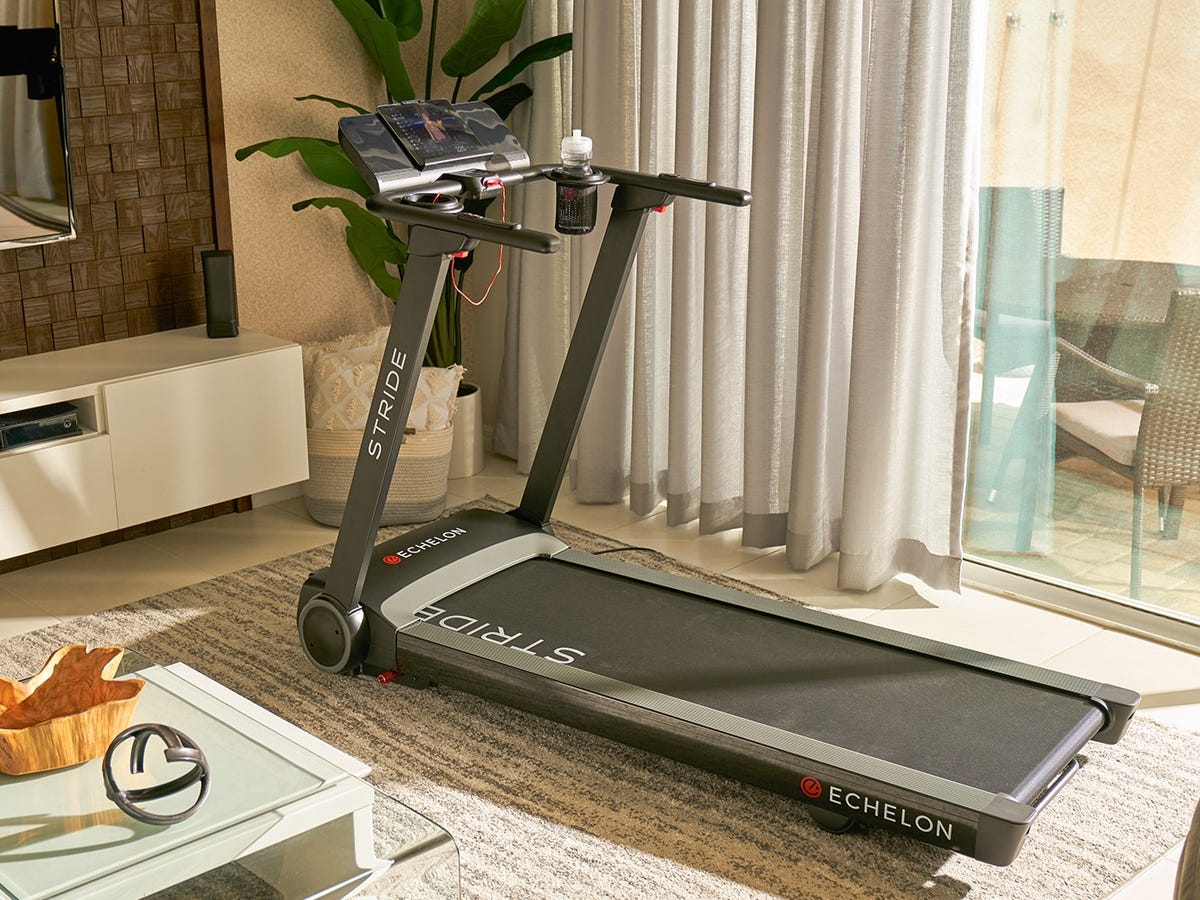
Credit: www.cnet.com

Credit: www.amazon.com
Frequently Asked Questions For How To Run Quietly On A Treadmill
How Do You Run Softly On A Treadmill?
To run softly on a treadmill, land on the balls of your feet, maintain a slight knee bend, keep your posture upright, relax your shoulders, and use a light grip on the handrails.
Why Is Running On A Treadmill So Loud?
Running on a treadmill is loud due to the motor operation, belt movement, and the impact of feet striking the deck. Regular maintenance can reduce noise levels.
How Can I Make My Treadmill Quieter When Running?
To quiet a treadmill, place it on a mat, ensure it’s level, lubricate the belt, tighten any loose parts, and maintain it regularly.
How Do I Run Silently?
To run silently, land softly on your midfoot, engage your core, maintain a relaxed posture, breathe deeply, and wear flexible, well-cushioned footwear.
Conclusion
Mastering the art of running quietly on a treadmill is truly within your reach. By adopting the right techniques, adjusting your form, and choosing proper footwear, you’ll minimize noise and maximize gains. Embrace these tips for a quieter, more enjoyable workout experience.
Remember, consistency is key to your stealthy strides. Happy and silent running!
 7 Best Magnetic Spin Bikes of 2025 ( Buying Guide )
7 Best Magnetic Spin Bikes of 2025 ( Buying Guide ) 7 Best Upright Exercise Bike Reviews In 2025 (Buying Guide)
7 Best Upright Exercise Bike Reviews In 2025 (Buying Guide) 10 Best Yoga Mat For Sweaty Hands In 2025
10 Best Yoga Mat For Sweaty Hands In 2025 6 Best Macebell In 2025 ( Top Picks With Buying Guide )
6 Best Macebell In 2025 ( Top Picks With Buying Guide )